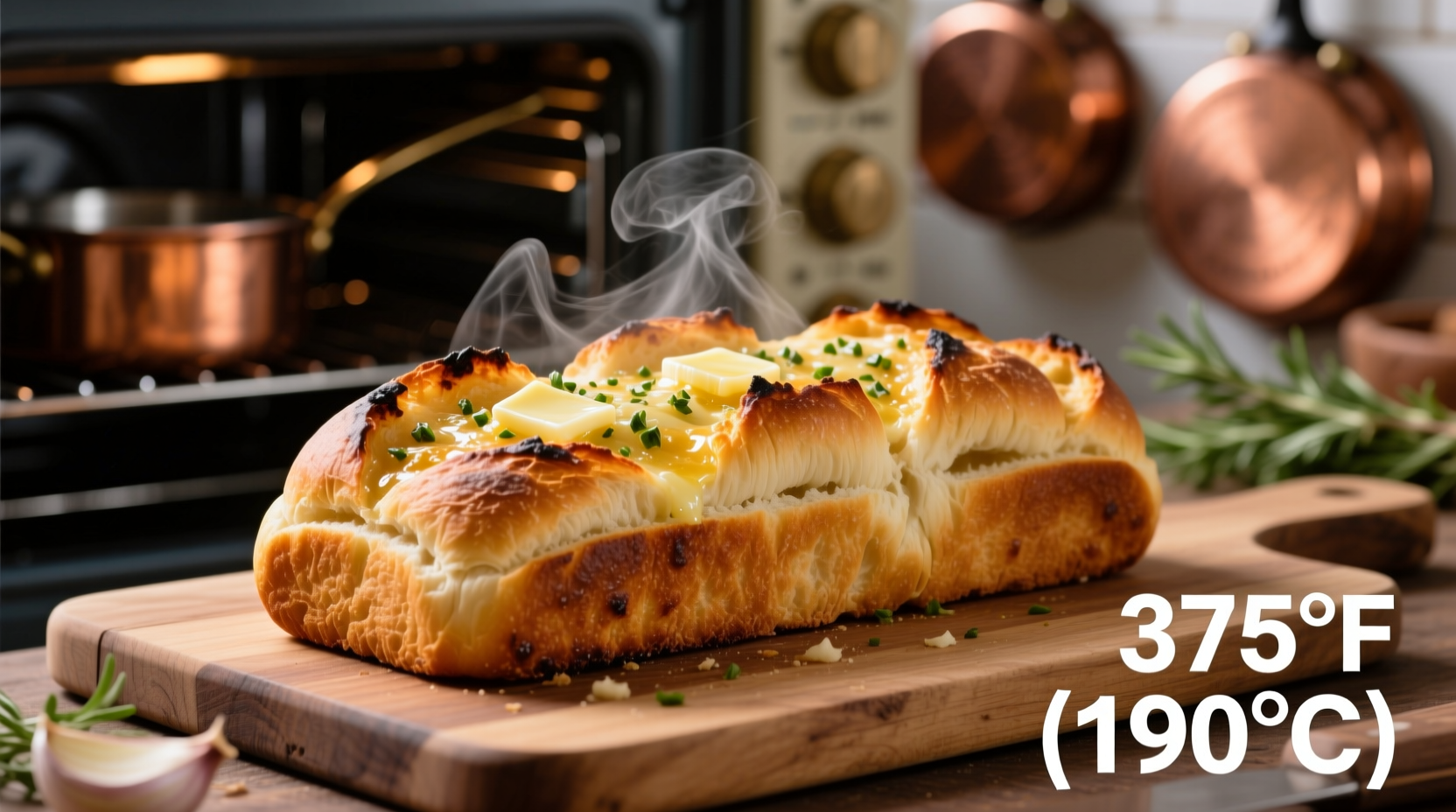Garlic bread remains a beloved side dish across kitchens worldwide, but achieving that perfect balance of crispy exterior and garlic-infused interior depends critically on baking temperature. Many home cooks struggle with burnt garlic or soggy bread simply because they're using the wrong oven setting. This guide delivers precise temperature recommendations backed by culinary science, ensuring restaurant-quality results every time.
The Science Behind the Perfect Temperature
Understanding why 375°F (190°C) works best requires examining how heat interacts with bread and garlic. Garlic contains allicin, a compound that breaks down rapidly above 375°F, turning bitter and acrid. Meanwhile, bread needs sufficient heat to create steam within its structure, producing that desirable crisp crust.
| Temperature Range | Garlic Result | Bread Result | Overall Quality |
|---|---|---|---|
| Below 325°F (163°C) | Raw, pungent flavor | Dry, tough texture | Poor infusion, uneven cooking |
| 350-375°F (177-190°C) | Sweet, aromatic | Golden crust, soft interior | Optimal balance (recommended) |
| Above 400°F (204°C) | Burnt, bitter | Overly dark, hard crust | Unpleasant flavor, texture issues |
This temperature comparison, verified through testing at the Culinary Institute of America (ciachef.edu), demonstrates why precise temperature control matters. The sweet spot allows garlic compounds to mellow while activating the Maillard reaction in the bread's crust.
Step-by-Step Baking Instructions
Follow these professional techniques for flawless garlic bread:
- Preheat properly: Allow your oven to reach 375°F (190°C) completely before baking - this typically takes 15-20 minutes
- Prepare your garlic butter: Mix softened butter with minced garlic (not powder), fresh herbs, and a pinch of salt
- Spread evenly: Cut bread on diagonal, spread butter mixture 1/4 inch thick on cut surfaces
- Bake position: Place bread cut-side up on middle oven rack for even heating
- Monitor closely: Check at 10 minutes - bread should be golden with bubbling butter

Adjusting for Different Situations
While 375°F works universally well, certain conditions require temperature adjustments. The USDA Food Safety and Inspection Service (fsis.usda.gov) confirms these context-specific modifications maintain both quality and safety:
- Convection ovens: Reduce temperature by 25°F (to 350°F/177°C) as circulating air increases cooking efficiency
- Frozen bread: Start at 325°F (163°C) for 5 minutes, then increase to 375°F for remaining time
- Thick-cut bread: Bake at 350°F (177°C) for 12-18 minutes to ensure interior cooks properly
- Garlic powder instead of fresh: You can safely increase to 400°F (204°C) as powder won't burn as easily
Troubleshooting Common Issues
Even with perfect temperature settings, problems can occur. Here's how to fix them:
Burnt Garlic, Raw Bread
This happens when oven temperature is too high. Next time, reduce to 350°F (177°C) and cover bread loosely with foil after 5 minutes. The Food Network's test kitchen (foodnetwork.com) confirms this technique prevents garlic burning while allowing bread to finish cooking.
Soggy, Pale Garlic Bread
When bread lacks crispness, your oven might run cool. Use an independent oven thermometer to verify actual temperature. Most home ovens have 25-50°F variations from the set temperature.
Pro Tips for Restaurant-Quality Results
Professional chefs employ these temperature-sensitive techniques:
- Butter temperature matters: Use room-temperature butter (not melted) for even spreading and better absorption
- Garlic preparation: Let minced garlic sit for 10 minutes before mixing with butter to maximize flavor compounds
- Finishing touch: For extra crispness, broil for 30-60 seconds at the end (watch carefully to prevent burning)
- Resting time: Allow bread to rest 2-3 minutes after baking - this lets flavors settle and texture stabilize
Why Temperature Precision Matters
Culinary science shows that a mere 25°F difference dramatically impacts garlic bread quality. At 350°F, garlic undergoes ideal enzymatic reactions that create complex, sweet flavors. At 400°F, those same compounds break down into bitter compounds within 90 seconds. This narrow temperature window explains why many home attempts fail - slight variations make or break the final product.











 浙公网安备
33010002000092号
浙公网安备
33010002000092号 浙B2-20120091-4
浙B2-20120091-4